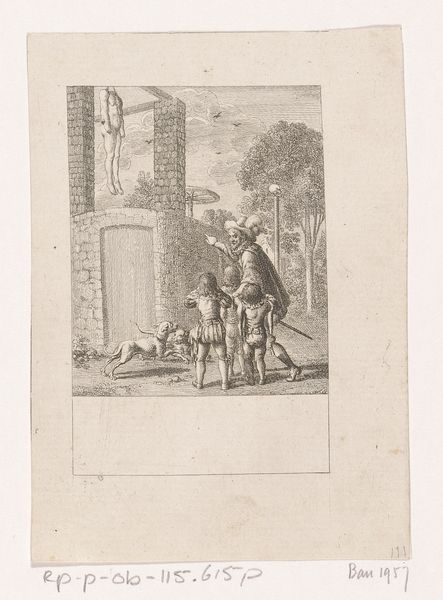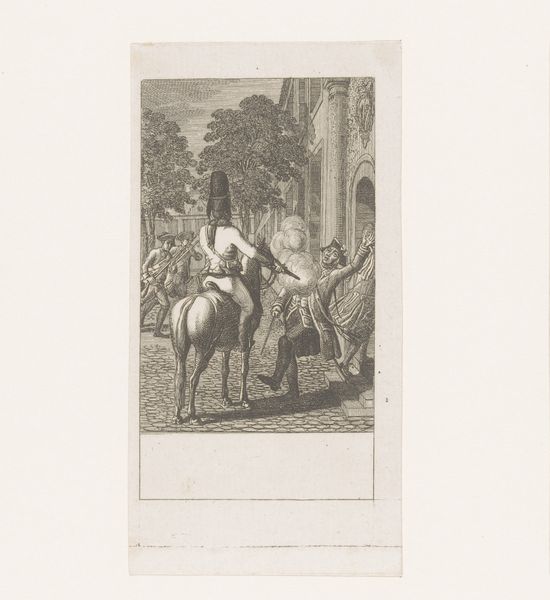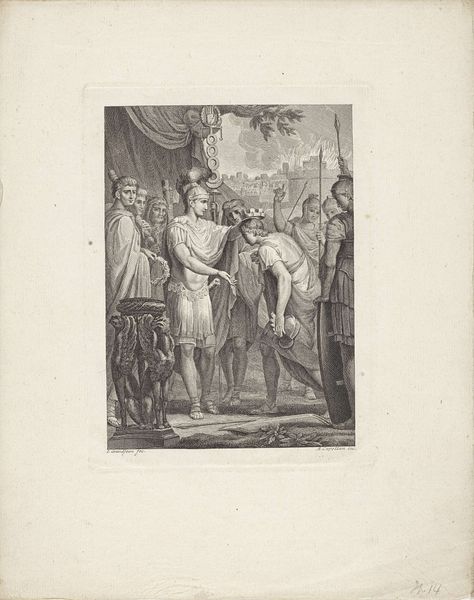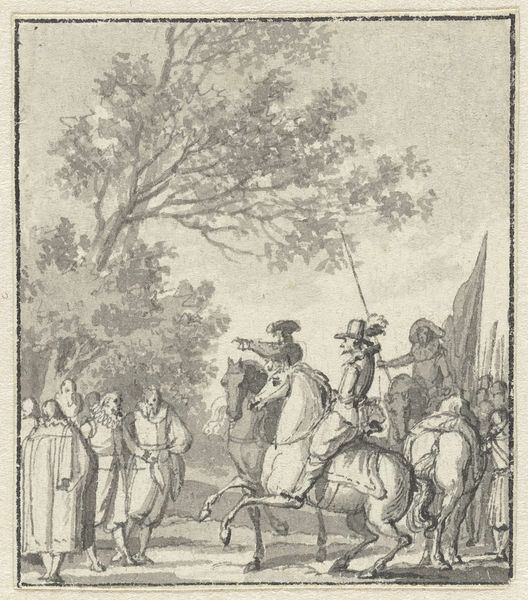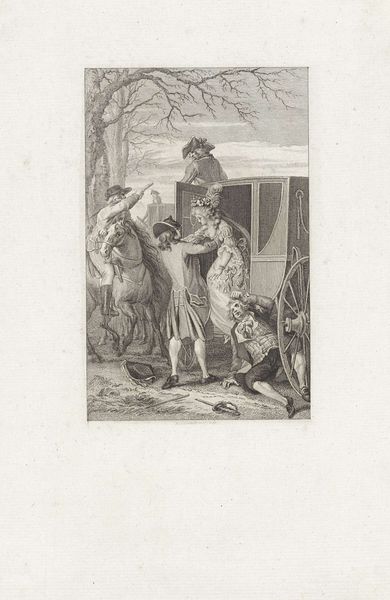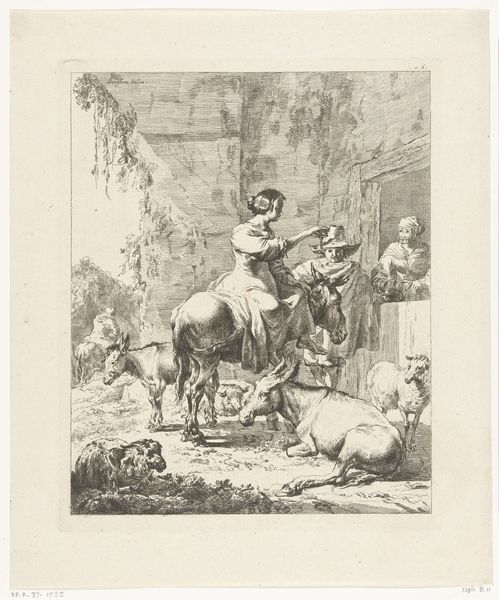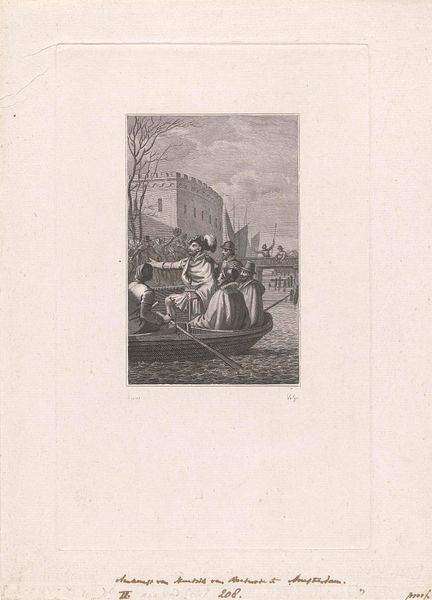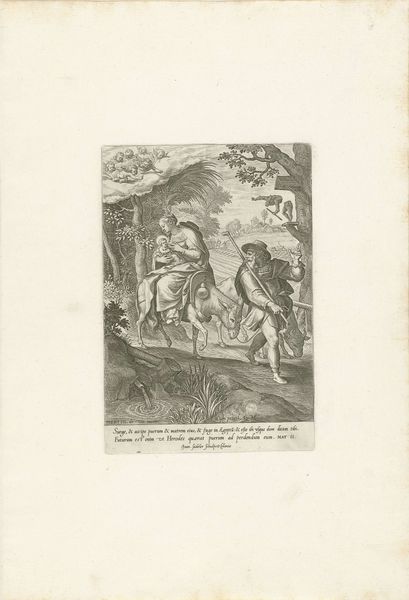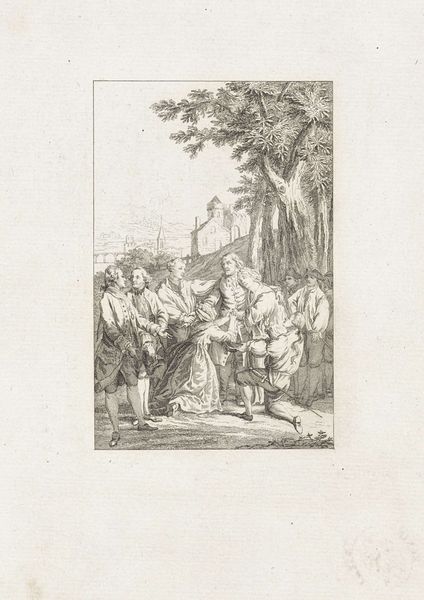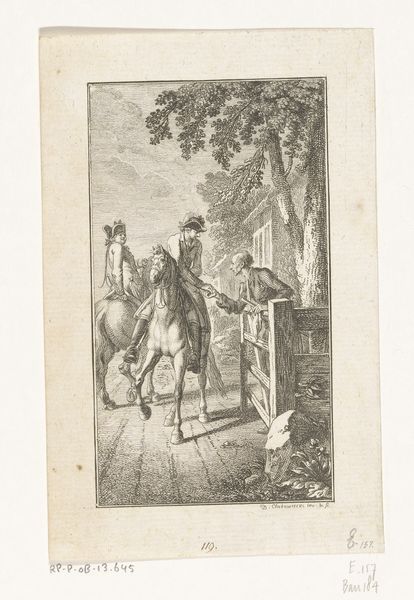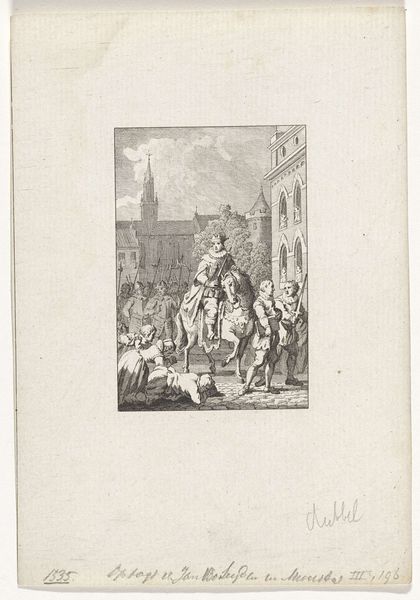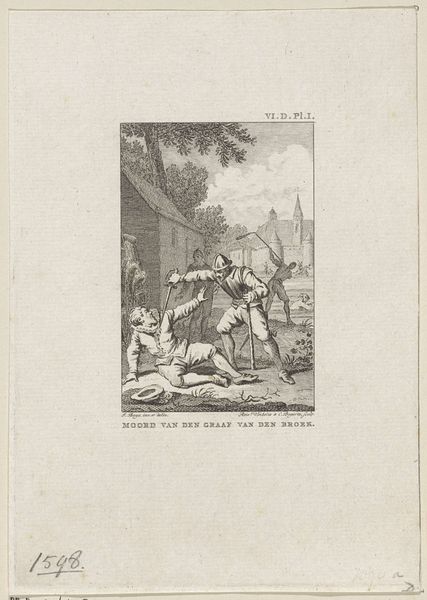
print, engraving
#
portrait
# print
#
landscape
#
romanticism
#
genre-painting
#
history-painting
#
engraving
Dimensions: height 247 mm, width 168 mm
Copyright: Rijks Museum: Open Domain
Editor: So, this is “Ruiter geeft een bedelende jongen munten,” or “Rider Giving Coins to a Begging Boy,” an engraving by Reinier Vinkeles, created around 1806-1807. It’s quite striking, this sharp contrast between the mounted riders and the beggar. What narrative layers do you see within this composition? Curator: I see the embodiment of societal disparity, certainly. Beyond the immediate scene, consider the enduring symbolic weight of the horse and rider throughout history. Traditionally, it represents power, control, nobility even. Here, it's juxtaposed against the image of supplication, amplified by the child. Doesn't the child’s posture remind you of religious iconography, almost a reversal of the Madonna figure? Editor: That’s a fascinating point. I hadn't thought of it in those terms. Are you suggesting that the image subtly critiques the power dynamics? Curator: Indeed. The gate behind the riders suggests exclusion and privilege, a boundary reinforced by their elevated position. The figures themselves become symbolic actors. Is it charity, or merely a performance of benevolence for their own image? Vinkeles offers no easy answers, inviting us to confront uncomfortable truths about social responsibility and power. Do you think the choice of engraving reinforces the contrast between the two social situations in any way? Editor: Maybe, yes. The sharp lines of the engraving definitely amplify the visual distinction, setting up a visual division as if to keep the worlds separate. I will have to study Vinkeles's other engravings. This was insightful, thanks. Curator: And for me as well. Consider how prevalent this imagery is throughout art history, and ask yourself: what has really changed? The visual vocabulary continues to resonate.
Comments
No comments
Be the first to comment and join the conversation on the ultimate creative platform.
